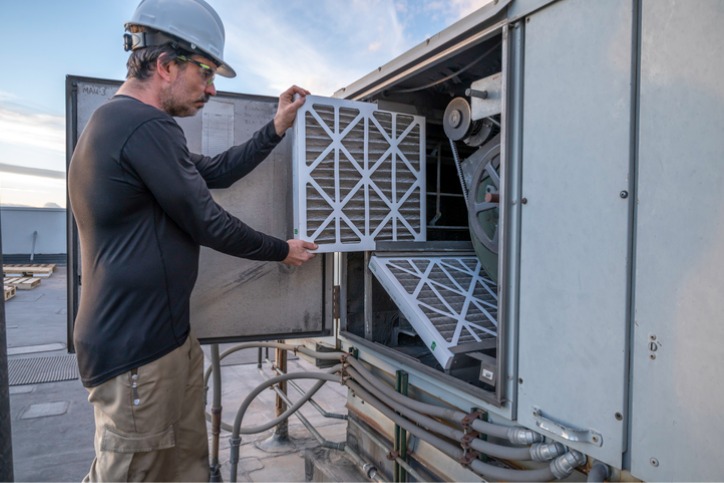As you prepare for the frigid winter weather, don't overlook your swamp cooler! While you prepare other appliances around your home or business for winter, take the time to winterize your swamp cooler. Winterizing your swamp cooler can help reduce the chance of damage to the system caused by cold temperatures. Because swamp coolers are evaporative coolers, they differ from typical HVAC cooling systems. Unlike traditional cooling systems, which absorb and compress air, these systems cool your indoor spaces by vaporizing water, speeding up the cooling process while providing energy and cost-efficient cooling!
As winter reaches its peak cold, it's imperative to take the required steps to winterize your evaporative cooling system with swamp cooler maintenance from Spoor's Heating & Air Conditioning. Our colder temperatures in Northern California can cause pipelines to freeze and rupture, possibly leading to costly repairs or pipeline replacements. Other potential consequences of skipping swamp cooler winterization include a loss of heated air through leaks in the vents and corrosion or rust. Here, our HVAC technicians offer a comprehensive guide to help prepare your swamp cooler for winter. Contact us today for heating services and to schedule HVAC service in Auburn, CA, and beyond!

Shut Off The Power
Before you start winterizing your cooler, shutting off the power supply is crucial. Unplugging the unit from its power source prevents the risk of electrocution while you perform the subsequent winterizing tasks. Ensuring the power is turned off also provides peace of mind, knowing your swamp cooler won't turn on during the frigid winter.
Disconnect The Water Supply
As frigid weather blasts through Northern California, home and business owners with swamp coolers should ensure the water line is not connected to the cooler, making sure to disconnect your swamp cooler's water supply. To do this, find the valve that provides water to your swamp cooler. The valve is typically located out of clear view to protect it from cold air. Once you identify the valve, check to ensure the pipes are free from water, and then shut the valve down. If water is allowed to sit in the pipes during the winter, the pipes can burst due to freezing. Be sure there is no electricity to the cooler before you work with the lines or valves!
Drain The Water
During the fall, spring, and summer months, it's fine for water to remain in your swamp cooler. But, during the winter season, you shouldn't leave any water in the cooler, as swamp coolers have metal pans prone to rust if water remains in them throughout the winter. For this process, remove both sides of the cooler and ensure all the water is drained. Once the water is fully drained, clean the areas to ensure they are completely dry. After you ensure they are dry, keep the drain open to ensure any rainwater entering the system can flow out so the pans won't rust.
Clean The Cooler's Interior
Your swamp cooler's interior walls and surfaces are prone to accumulating dirt, debris, and grime, particularly over the spring and summer. Once you sufficiently empty the water from your swamp cooler, use warm, soapy water and a sponge or towel to clean and wipe down the unit's interior walls. Cleaning the interior surfaces of your swamp cooler will maintain its condition and help ensure it's ready to use once summer arrives.
Change The Evaporative Pads
In most cases, you'll want to start winterizing your swamp cooler by swapping out the cooler pads. Over the summer months, these pads suck up and accumulate mineral residue, and the metal in the system can rust from exposure to rainwater. As such, ensuring your cooling pads are clean and free from debris or build-up will protect the metal. Changing out these pads now can also prove advantageous during the summer, as it ensures your swamp cooler is ready to turn on and function properly when you need it.
Install A Cooler Cover
After completing all of the aforementioned tasks, you'll want to finish the winterization process by ensuring that your swamp cooler is protected throughout the winter. Use a cover that is specifically designed to work with your swamp cooler. This cover fits perfectly over your cooler and sufficiently prevents rain and other debris from entering the unit. Installing a cover over your swamp cooler will protect it during the winter months, but it will also reduce the amount of preparation needed come summer, as the cooler is kept clean and will be easier to clean and prepare before it's required for use later on.
